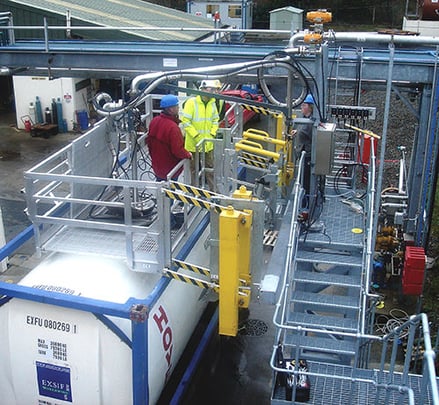Understanding the Importance of Chemical Transfer Optimization
 Chemical transfer optimization is crucial for the efficient and safe operation of any chemical loading facility. By maximizing the efficiency of the transfer process, you can minimize product loss, reduce downtime, and ensure the safety of your personnel and the environment.
Chemical transfer optimization is crucial for the efficient and safe operation of any chemical loading facility. By maximizing the efficiency of the transfer process, you can minimize product loss, reduce downtime, and ensure the safety of your personnel and the environment.
One of the key factors in chemical transfer optimization is the use of top loading arms. These specialized equipment are designed to safely and efficiently transfer chemicals from storage tanks to tank trucks or railcars. They offer a range of benefits, including increased productivity, improved worker safety, and reduced environmental impact.
Key Features and Benefits of Chemical Top Loading Arms
Chemical top loading arms are specifically designed to handle the unique challenges of chemical transfer. They feature a robust construction with materials that are compatible with a wide range of chemicals, ensuring the integrity of the transfer process.
Some key features of chemical top loading arms include precise control over flow rates, automatic shut-off valves for quick and safe disconnection, and integrated safety features such as overfill protection and grounding systems.
The benefits of using chemical top loading arms include increased transfer efficiency, reduced spillage and product loss, improved worker safety by minimizing exposure to hazardous chemicals, and compliance with environmental regulations.
Factors to Consider When Choosing a Chemical Top Loading Arm
When selecting a chemical top loading arm for your facility, there are several factors to consider. These include the type and properties of the chemicals being transferred, the flow rate and pressure requirements, the available space and layout of your facility, and any specific safety or regulatory requirements.
It is important to choose a top loading arm that is compatible with the chemicals you are working with. This includes considering factors such as chemical compatibility, temperature range, and resistance to corrosion.
Additionally, consider the flow rate and pressure requirements of your operation. Different loading arms are designed to handle different flow rates and pressures, so it is important to select one that meets your specific needs.
Finally, take into account the available space and layout of your facility. Make sure the top loading arm can be easily installed and operated without interfering with other equipment or processes.
By carefully considering these factors, you can choose the right chemical top loading arm that best suits your facility's needs.
Installation and Maintenance Best Practices for Chemical Top Loading Arms
Proper installation and maintenance of chemical top loading arms are essential for their safe and efficient operation. Follow these best practices to ensure optimal performance and longevity of your equipment.
During installation, ensure that the top loading arm is securely mounted and properly aligned. This will prevent any leaks or misalignments that can lead to accidents or product loss.
Regular maintenance is also crucial. Inspect the loading arm regularly for any signs of wear or damage, and replace any worn-out or defective parts immediately. Lubricate the moving parts as recommended by the manufacturer to ensure smooth operation.
It is also important to train your personnel on the proper use and maintenance of the top loading arms. Make sure they are familiar with all safety procedures and protocols, and provide them with any necessary personal protective equipment.
By following these installation and maintenance best practices, you can ensure the safe and reliable operation of your chemical top loading arms.



